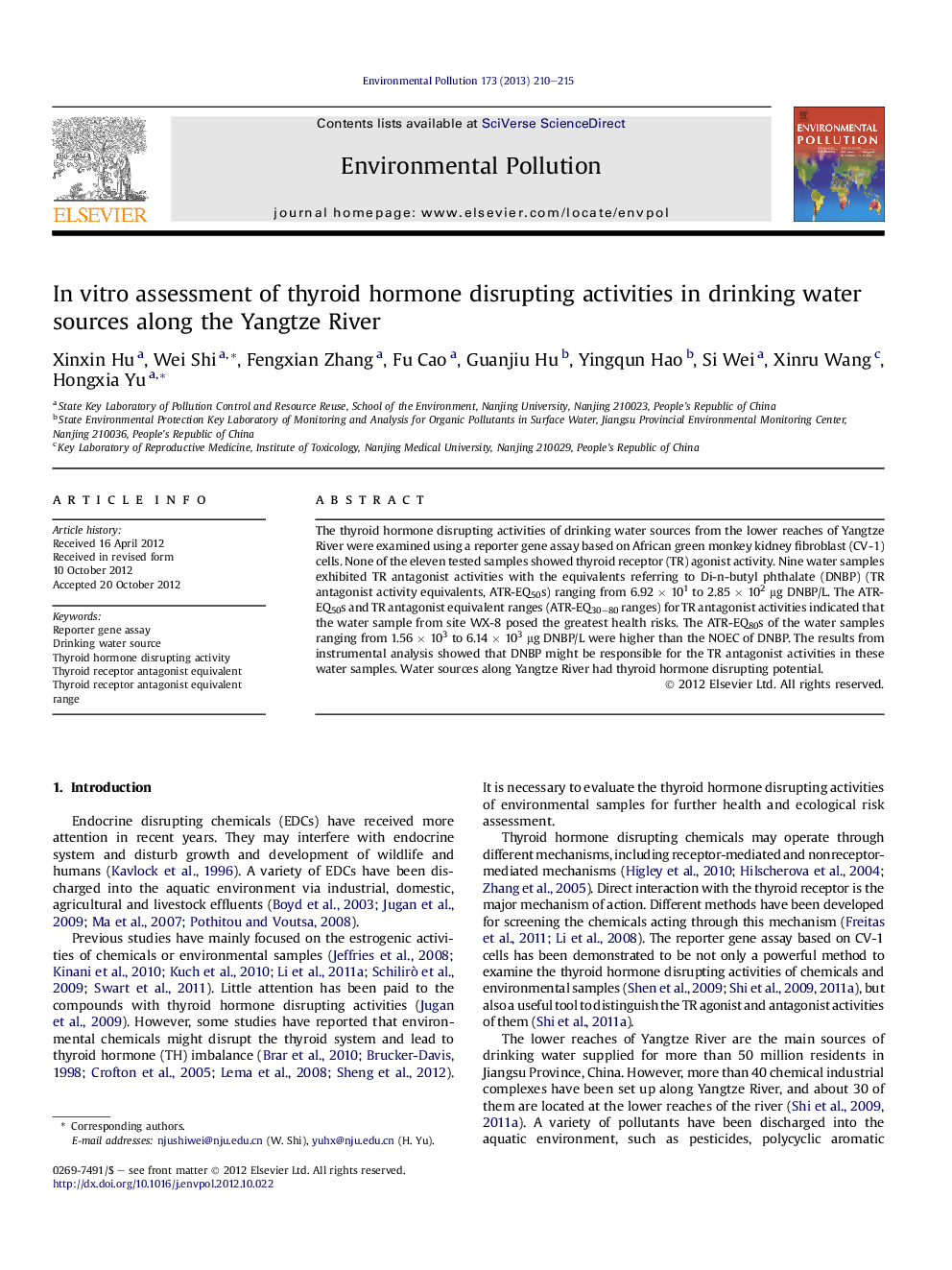| Article ID | Journal | Published Year | Pages | File Type |
|---|---|---|---|---|
| 4424490 | Environmental Pollution | 2013 | 6 Pages |
The thyroid hormone disrupting activities of drinking water sources from the lower reaches of Yangtze River were examined using a reporter gene assay based on African green monkey kidney fibroblast (CV-1) cells. None of the eleven tested samples showed thyroid receptor (TR) agonist activity. Nine water samples exhibited TR antagonist activities with the equivalents referring to Di-n-butyl phthalate (DNBP) (TR antagonist activity equivalents, ATR-EQ50s) ranging from 6.92 × 101 to 2.85 × 102 μg DNBP/L. The ATR-EQ50s and TR antagonist equivalent ranges (ATR-EQ30–80 ranges) for TR antagonist activities indicated that the water sample from site WX-8 posed the greatest health risks. The ATR-EQ80s of the water samples ranging from 1.56 × 103 to 6.14 × 103 μg DNBP/L were higher than the NOEC of DNBP. The results from instrumental analysis showed that DNBP might be responsible for the TR antagonist activities in these water samples. Water sources along Yangtze River had thyroid hormone disrupting potential.
► We examined thyroidal activities of drinking water sources at lower reaches of Yangtze River. ► Nine sites showed TR antagonist activities and no site exhibited TR agonist activity. ► ATR-EQ50s and ATR-EQ30–80 ranges showed that the tested water samples had potential risks. ► The drinking water after water treatment processes may pose potential risks to residents. ► DBP, DEHP, NP and OP might contribute to TR antagonist activities in the aquatic environment.
